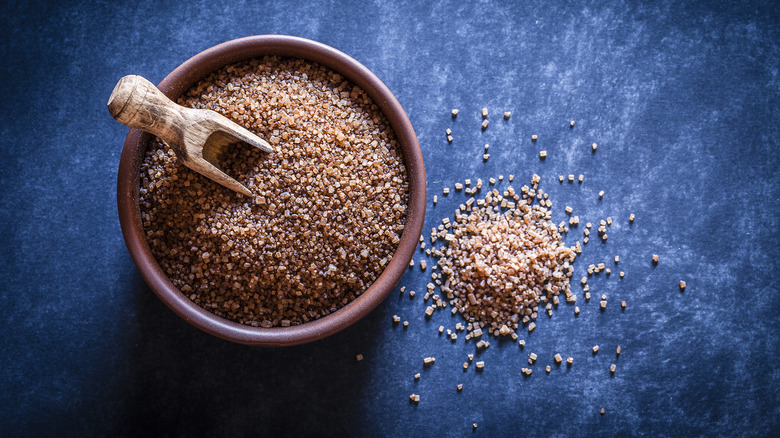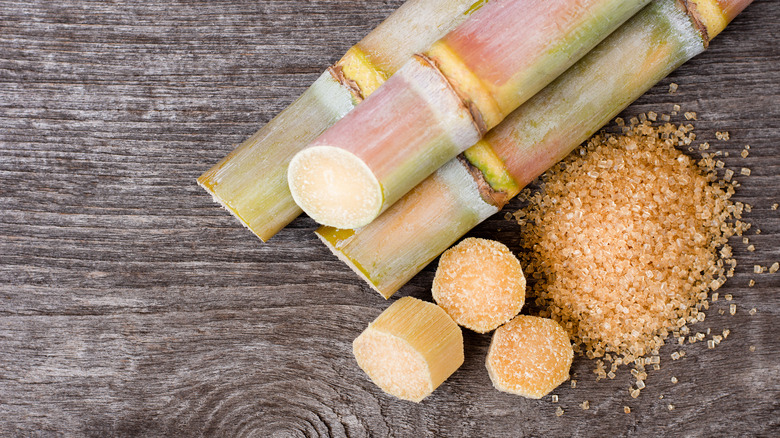How Cane Sugar, Or Sucanat, Gets Its Golden Hue
With so many types of sugar out there, it can be hard to know what you're getting. And one of the sugars you may have come across is cane sugar, also known as sucanat, short for "sugar cane natural." This coarse, unrefined sugar can be distinguished by its thick granules, which don't dissolve easily in liquid, and its golden brown hue.
Cane sugar gets its color from trace amounts of molasses. When making sugar, cane juice is extracted and then boiled, with sugar crystals separating from the rest of the cane juice in the process. What is leftover from this clarification process is molasses, which can be packaged separately as a thick syrup. Some molasses is left on the sugar granules, which can be refined to be fully removed, but this is not done with sucanat.
Unlike brown sugar, which is refined and then has molasses added back in, the molasses in cane sugar is a natural byproduct of its production. So while their flavors will be similar, their textures are very different (with brown sugar being softer and sucanat having more crunch). Sucanat also differs from jaggery and piloncillo, which are often formed into bricks, and though it looks similar to turbinado sugar, it has a much higher molasses content. (About 13% compared to 3% to 8%.) White sugar, in comparison, goes through an extensive refinement process to make it uniform in color and texture, making it easier to use but stripping it of that molasses flavor.
Sucanat vs. other sugars
Sucanat is actually a trademarked name by Wholesome Sweeteners Inc., making it a unique addition to your pantry arsenal. Like jaggery and piloncillo, cane sugar is unrefined, giving it a darker color and richer flavor than white sugar, with notes of caramel or even a smoky flavor profile. The extra molasses in it also has chemical effects as well. Molasses contains certain vitamins like magnesium and iron that can't be found in white sugar, but despite common misconceptions, unrefined sugar has the same calories as white sugar. Though calling cane sugar unrefined is something of a misnomer — all "unrefined" sugars do go through purification and refining processes, just not to the same extent as white sugar.
Sucanat is dryer than many brown sugars and doesn't clump as easily. It can be used for baking to add a richer flavor, but you will need to grind it in a spice grinder before adding it to baked goods, as its granules don't dissolve easily in their original state. Use 1.5 times as much sucanat in your baked goods compared to white granulated sugar or brown sugar. You can also leave it in its original state and take advantage of that extra texture by using it as a topping for baked goods.


